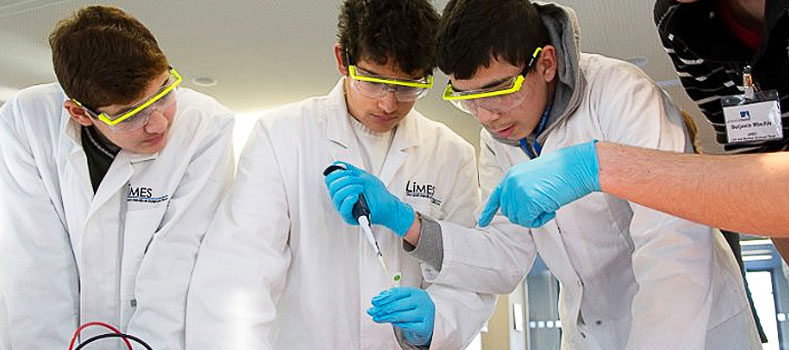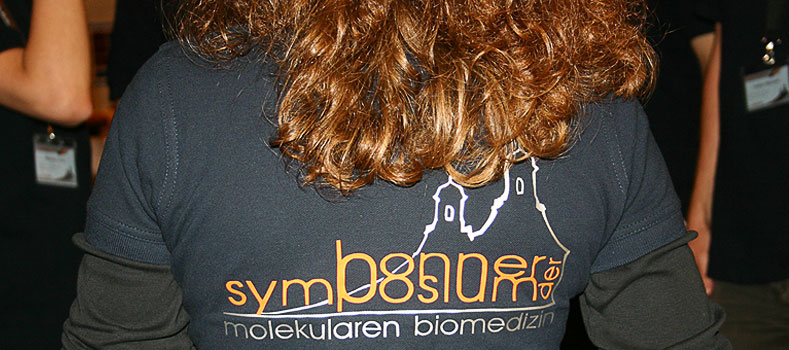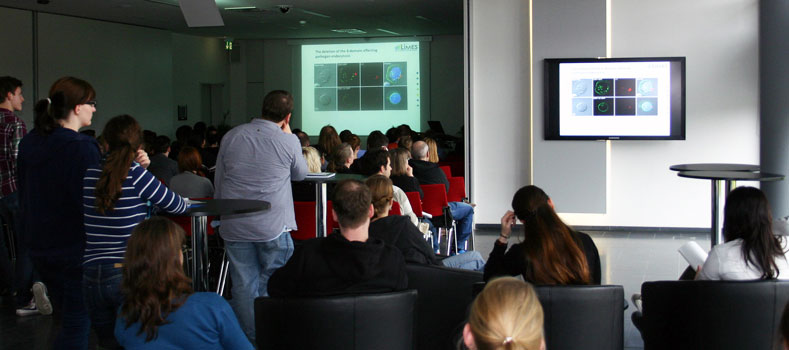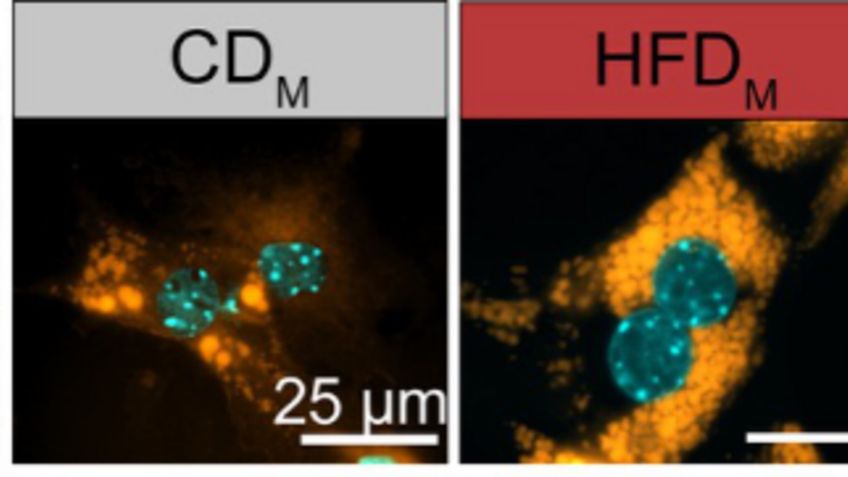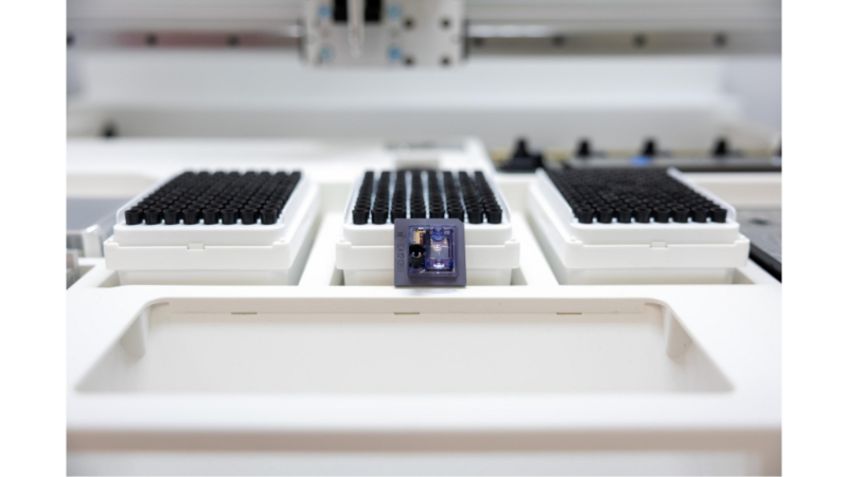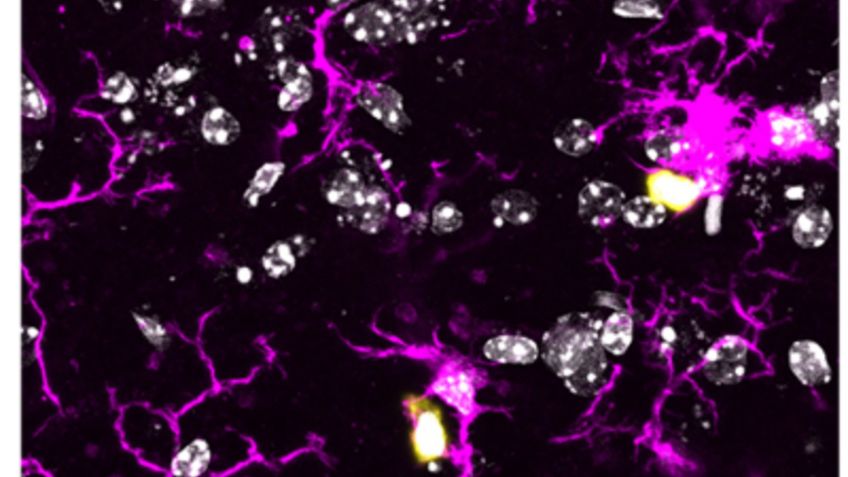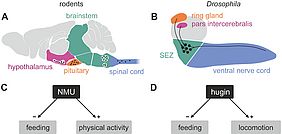Mammals and the fruit fly Drosophila melanogaster control metabolism via conserved fundamental peptidergic systems, such as the hormones insulin, glucagon or leptin. This also includes a range of neuropeptides which are employed by neurons in the central nervous system. While the study of the networks formed by such neurons remains challenging in the large and complex mammalian brain, mapping of the whole brain at single cell resolution has recently become feasible in the fly. In this new study, the Pankratz lab collaborated with the lab of Albert Cardona at the HHMI Janelia Research Campus to map the entire network of neurons that employ the anorexigenic neuropeptide hugin, which is a homolog of mammalian euromedinU. Among the key findings is that hugin neurons use acetylcholine in addition to hugin and that both, the neuropeptide and this classic synaptic transmitter, are necessary for the anorexigenic effect.
They also find that hugin neurons target the neuroendocrine system, including cells that release insulin-like and and CRH (corticotropin-releasing hormone)-like peptides by a combination of peptidergic and synaptic connectivity. This reveals striking similarities between the chemical connectivity of neuromedinU and hugin, and represents a major step towards understanding the actions of these conserved neuropeptides in flies and mammals.
Publication: Schlegel P, Texada MJ, Miroschnikow A, Schoofs A, Hückesfeld S, Peters M, Schneider-Mizell CM, Lacin H, Li F, Fetter RD, Truman JW, Cardona A, Pankratz MJ. Synaptic transmission parallels neuromodulation in a central food-intake circuit. Elife. 2016 Nov 15;5. pii: e16799. doi: 10.7554/eLife.16799. [Epub ahead of print] PubMed PMID: 27845623.





